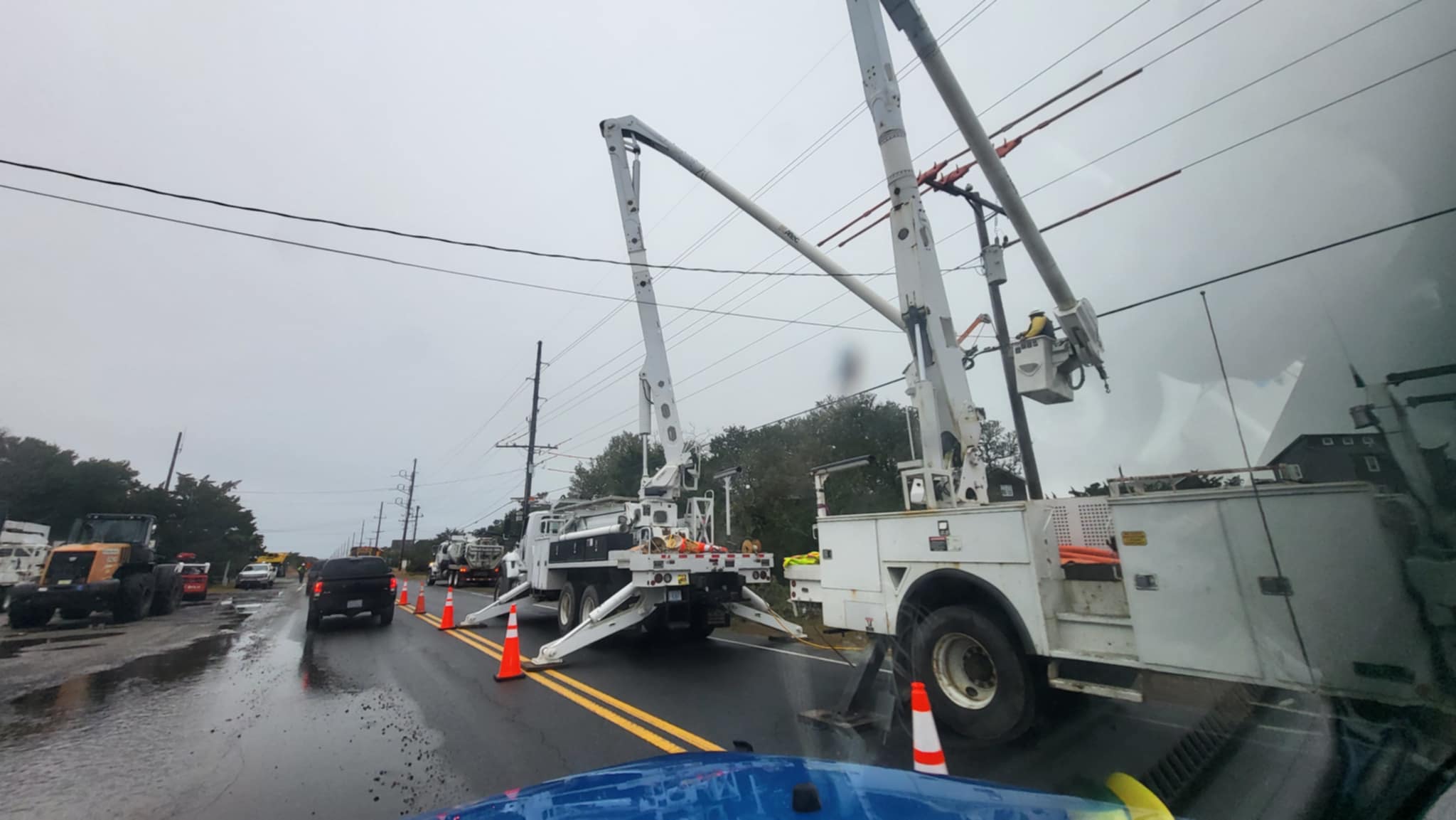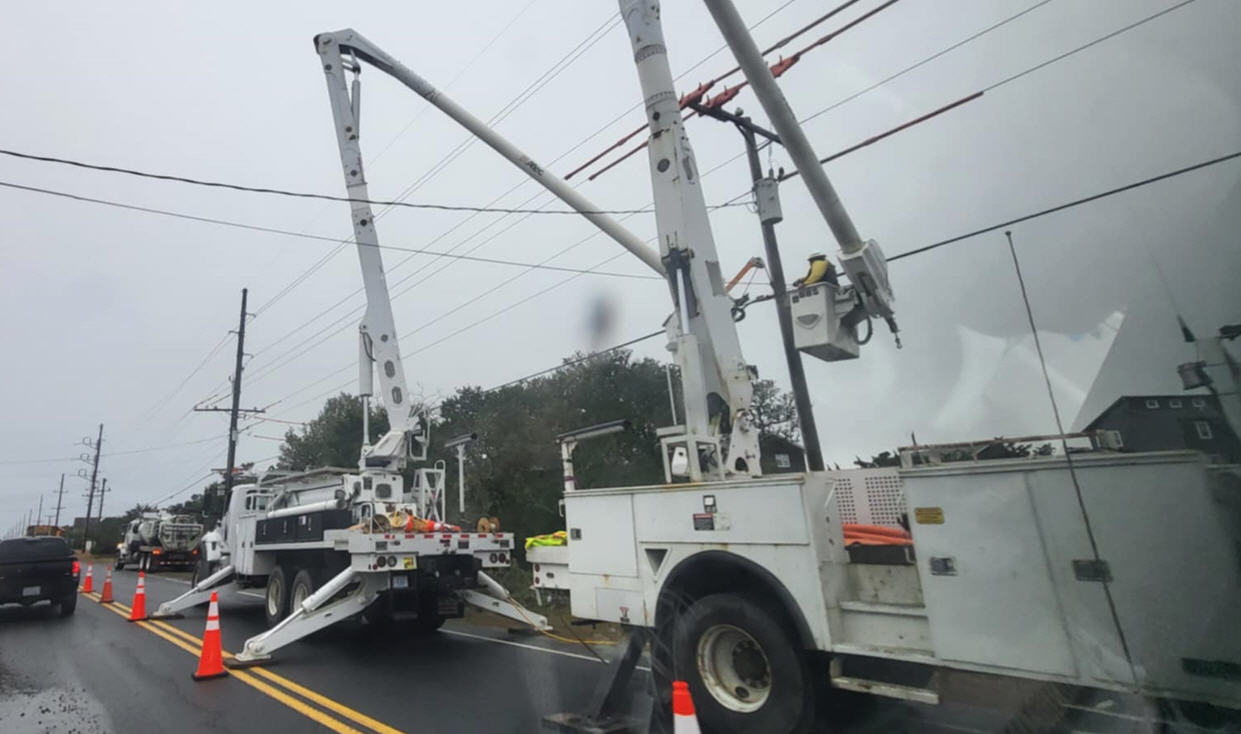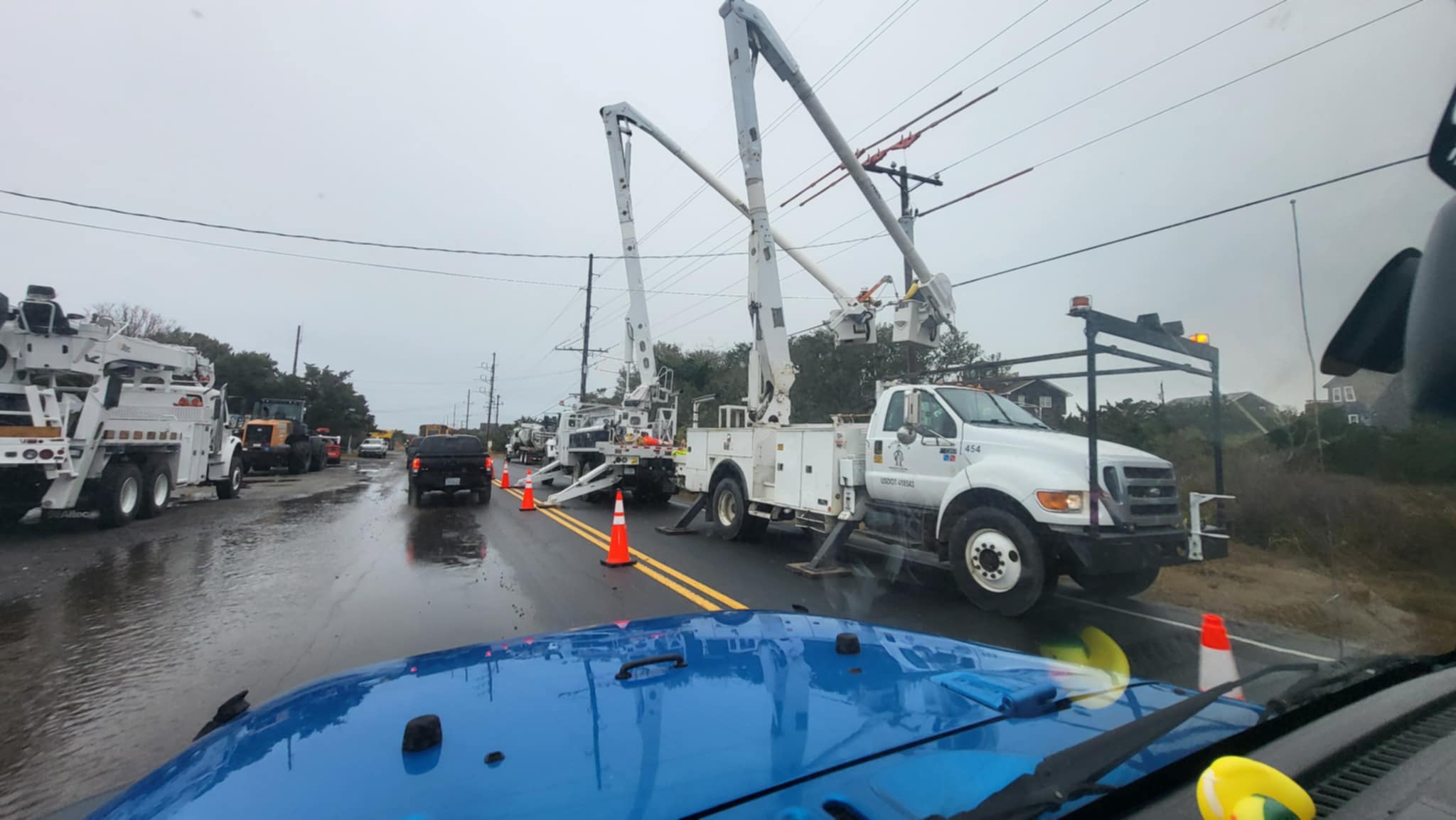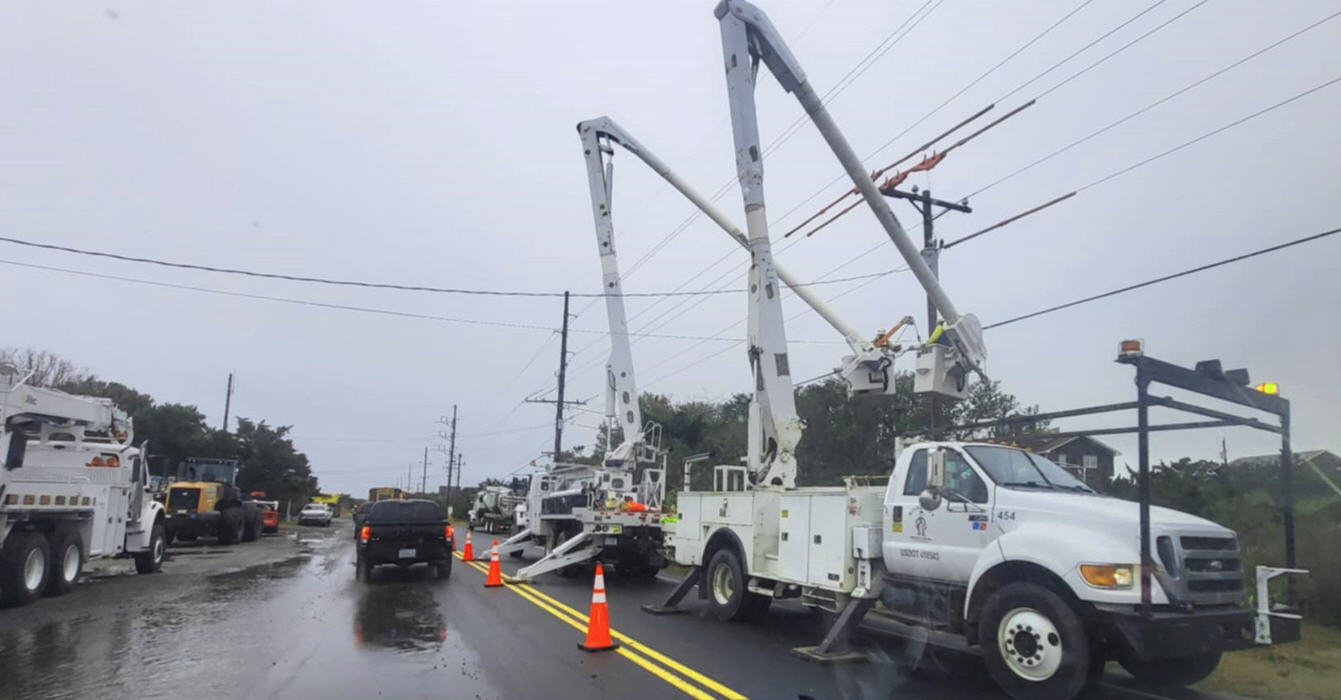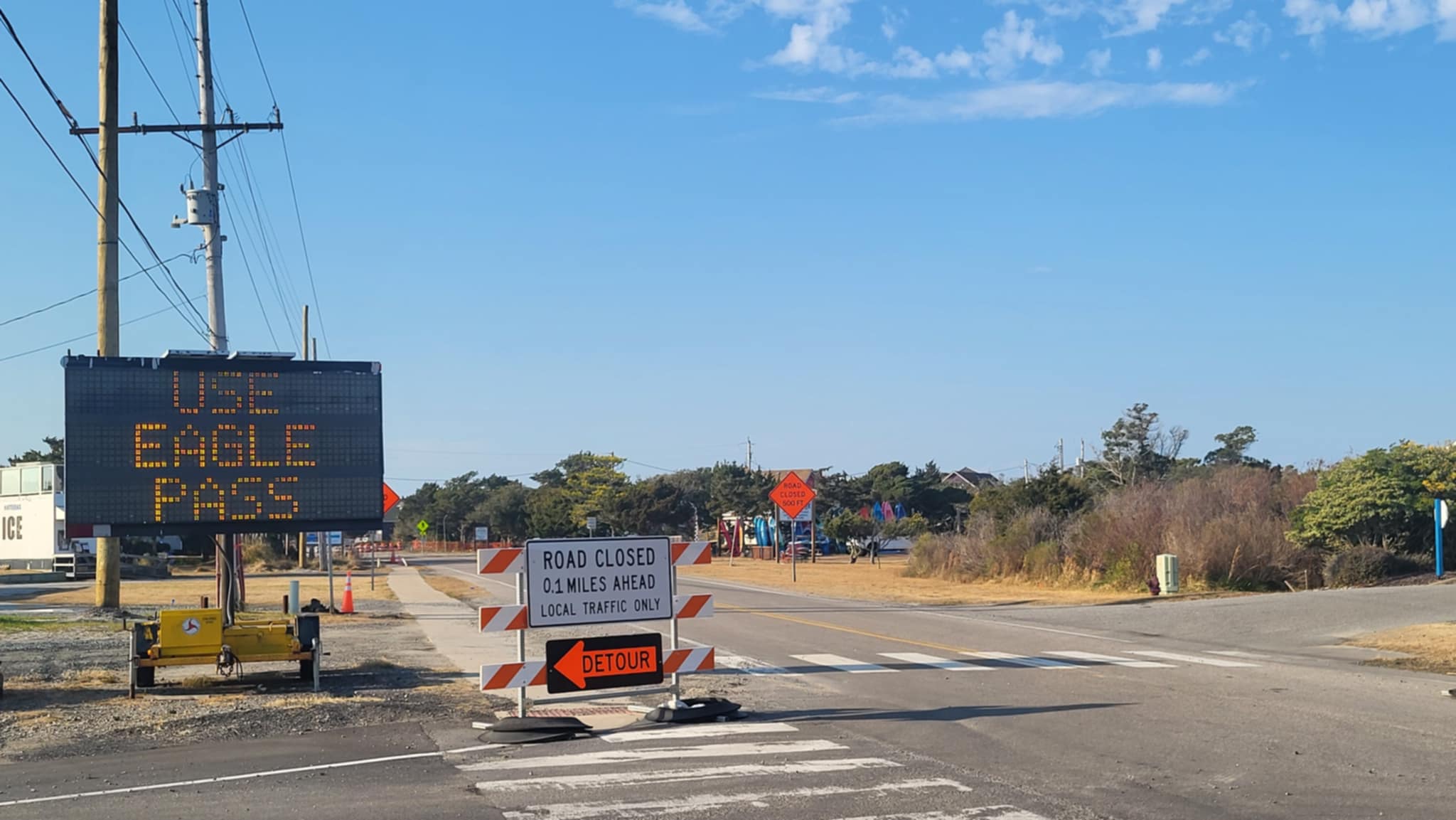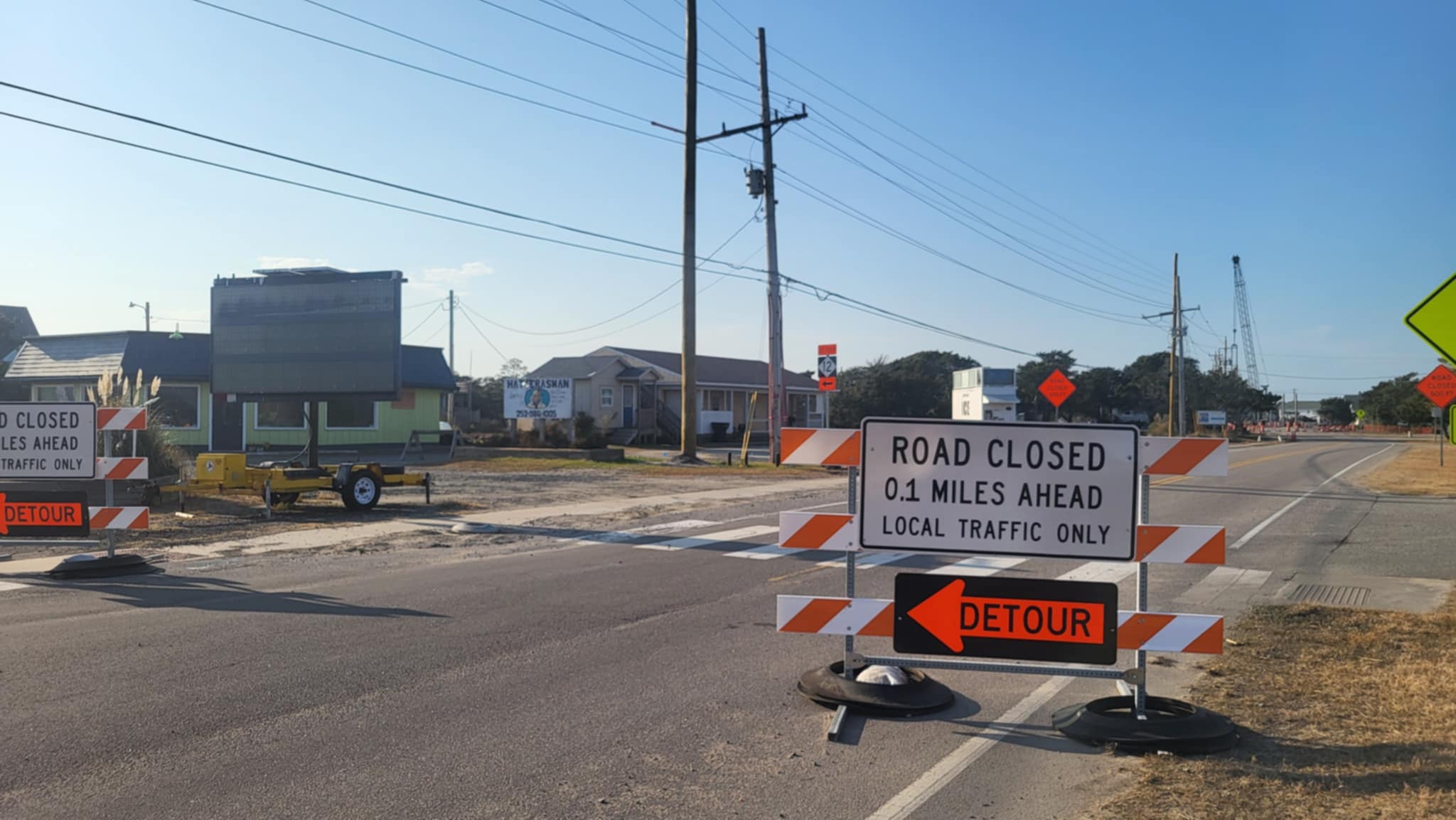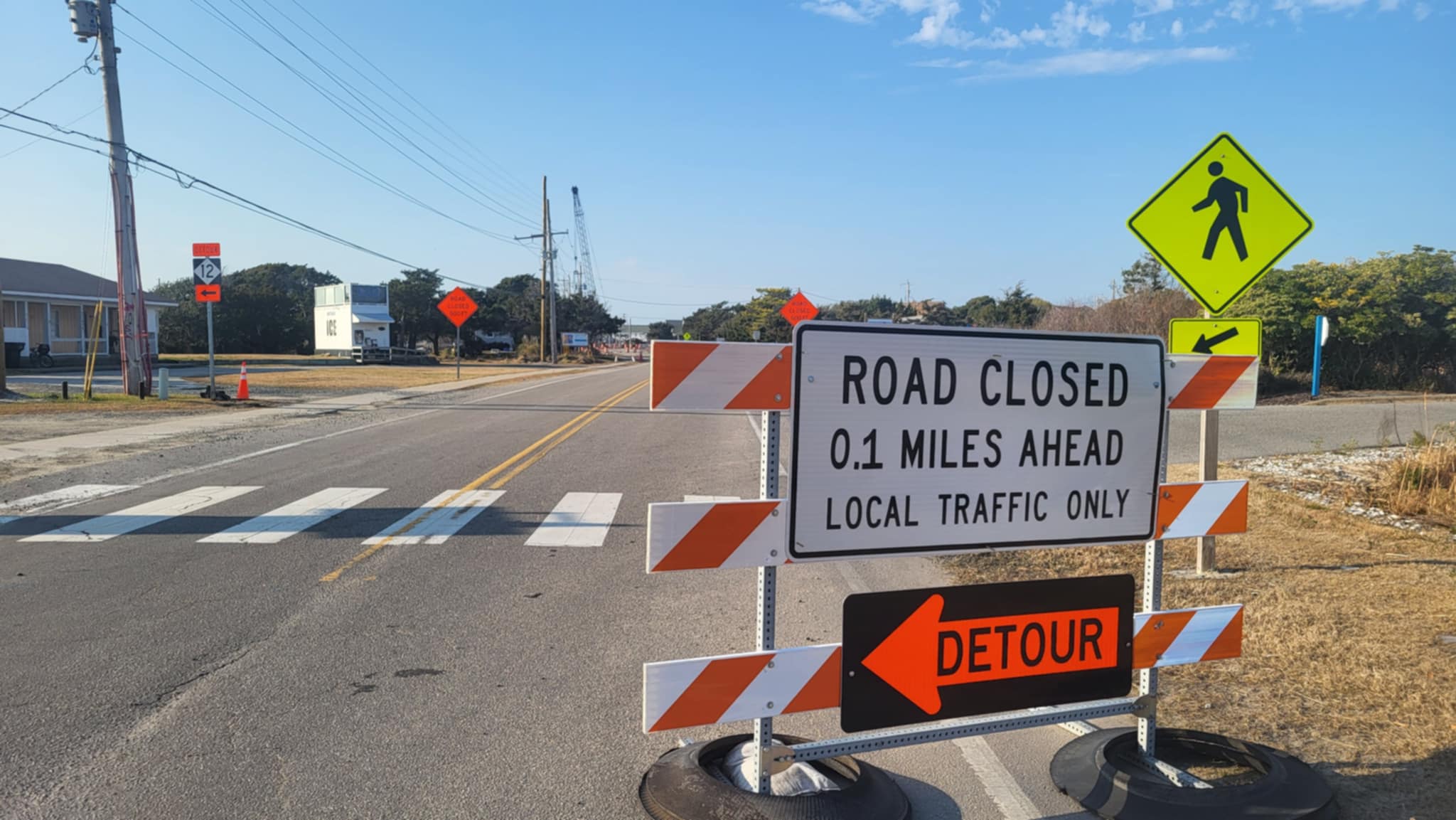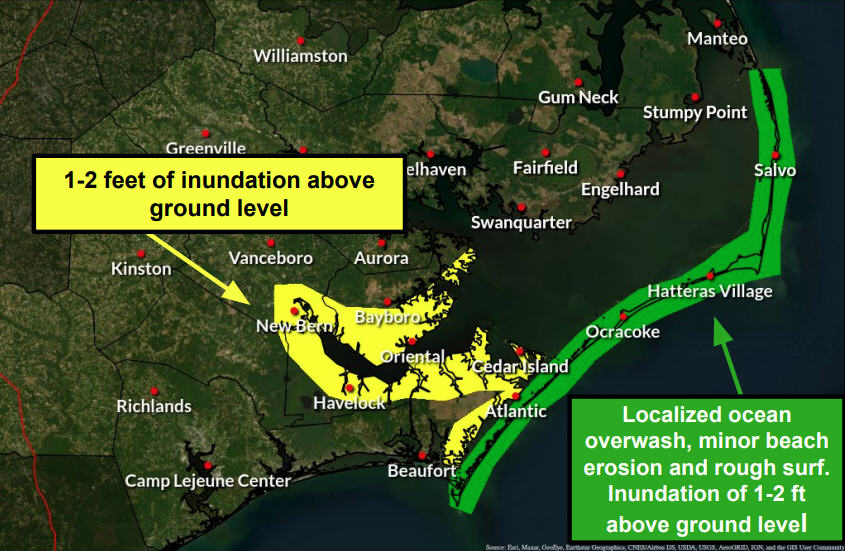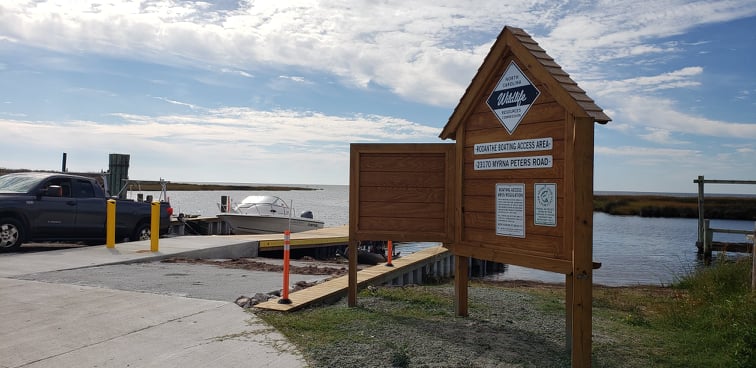Public Comments: The public comment period will be open from today until Sept. 6. Comments must be received on or before midnight (Eastern Daylight Time) on Tuesday, Sept. 6. The NPS says that it does not anticipate extending the public comment period beyond Sept. 6 because of the court deadline for completing the final rule. You may submit comments on the Proposed Rule, identified by the Regulation Identifier Number: (RIN) 1024-AD85, by any of the following methods:
Park Service publishes proposed ORV rule;
public comment period is open
By IRENE NOLAN
By IRENE NOLAN
By IRENE NOLAN
The National Park Service’s Notice of Proposed Rulemaking for the management of off-road vehicles at the Cape Hatteras National Seashore was published today in the Federal Register.
The publication initiates 60 days of public comment on the proposed rule.
The special regulation implements portions of the Park Service’s selected alternative, Alternative F, as outlined in the Final Environmental Impact Statement and the Record of Decision.
The proposed rule published today comes 33 years after the seashore’s first attempt at an ORV management plan that has been required by Executive Orders from the 1970s. In 1978, seashore managers sent a draft plan to Park Service headquarters in Washington, D.C. It was never formally promulgated and implemented, though the park informally was managed more or less under that plan for several decades.
Park managers started talking again about a need for a formal plan in the mid-1990s, though the 1999 relocation of the Cape Hatteras Lighthouse occupied management until after 2000.
In the last decade, the effort to implement an ORV managed plan has lurched forward in fits and starts that have included an interim management plan, which was vetted by the public and put in place in 2007, and a failed attempt at negotiated rulemaking in 2008 into 2009.
Since the end of negotiated rulemaking, the ORV plan has inched along slowly against a deadline set under a federal court-sanctioned consent decree that settled a lawsuit against the park by environmental groups.
The consent decree ordered that the plan be in place by April 1 of this year, a deadline the Park Service was unable to meet. The new deadline for implementation is Nov. 15.
After inching along since the winter 2009 end of negotiated rulemaking, the proposed rule sprinted to the finish line this summer.
The National Park Service finished writing the rule this spring and sent it to the Office of Management and Budget for regulatory review on May 27.
OMB is allowed 90 days for the review, and a spokesperson said last month that the average review lasts two months.
Interested parties, groups, and agencies can meet with OMB during the review process, though the rule was not public until today.
On June 23, Dare County officials and access advocates traveled to Washington where they met with OMB representatives and officials from the Park Service, U.S. Fish and Wildlife Service, and the White House Council on Environmental Quality to discuss their problems with the selected alternative, specifically the economic analysis.
Less than a week later, on June 28, the OMB website reported that the ORV rule had been sent back to NPS with “changes.”
At this point, it’s impossible to tell what, if any, changes were made.
There is one interesting reference to the OMB review in the preamble to the regulations.
“OMB has determined that this rule raises novel and legal or policy issues,” it notes, apparently referring to the consent decree.
The proposed rule is short – eight pages – and deals only with such issues as designating ORV routes, establishing a permit system, and imposing dates and times and other restrictions on vehicle use at the seashore, including vehicle standards and necessary equipment.
Some folks are no doubt going to be surprised by how little is included in the proposed regulation, but its lack of detail is not necessarily a bad thing.
You might consider the Park Service’s selected alternative, Alternative F, and the Record of Decision as the meat and potatoes of seashore management.
The ROD details such things as pre-nesting areas, buffer zones around bird nests, protections for sea turtles, ORV routes and areas, hours of operation for ORVs, pet rules, beach fires, permits, and beach carrying capacity. It addresses pedestrian access to the beach, as well as ORV access.
Think of the proposed regulation as the nitty-gritty of rules for operating ORVs on the seashore.
It contains a preamble, questions and answers, definitions, and the regulations under the NPS selected alternative. There are no alternatives to choose from.
After the preamble that establishes that the proposed regulation meets all the various federal requirements for rulemaking, the actual regulations cover only two pages, most of which are a description of the proposed ORV routes, as laid out in the ROD.
You will not find anything new in the proposed rule, which still references the RTI Economic Analysis, released last December after the EIS was final and the “best available science.” Both of these issues are contentious with access advocates and are defended again by the Park Service.
You can comment on anything, but don’t expect to change issues that were settled in the Record of Decision, and most were.
The battleground, so to speak on the proposed rule is what is included and what is not included.
Why?
The answer is that it’s more difficult to change the regulations than the environmental studies and seashore management practices, which the park is already committed to re-examining every five years, after major hurricanes, or when there is a status change on a protected species.
The people who advocate for more reasonable beach access will want to see as few details as possible in the regulation.
The environmentalists will want to get as many details as possible in the rules.
“Some people think we need to put buffers in the rule,” Mike Murray said at a meeting with reporters last December.
Beach access groups did not want to see buffers in the regulations – and they are not included in the proposed regulation..
Writing the regulation, Murray said is an “art” that “requires some management judgment.”
Murray said NPS will be concerned about getting enough into the regulation to enforce them without getting too specific.
“We want maximum flexibility,” he said. “I have had experience with parks that locked in regulations that are too specific.
A good example, he said, is Cape Cod, where Murray was assistant superintendent shortly after an ORV rule was implemented.
That rule spelled out a limit on ORV permits, leading to the “perception of scarcity.” The result was a rush to get permits, which were quickly sold out the first year.
The Defenders of Wildlife and the Southern Environmental Law Center did not respond to e-mailed requests for comments today.
Bobby Outten, Dare County manager and attorney, was cautiously encouraged by the fact that the regulations are treated fairly briefly – with no mention of such issues as buffers and pre-nesting areas.
However, Outten was disappointed that the contentious economic analysis, which was a major area of discussion when the delegation met with OMB last month, is still included.
The county, access advocacy groups, the Outer Banks Chamber of Commerce, and others consider that the analysis of the economic effects of the selected alternative has major flaws.
“DOI (Department of Interior) accepts the junk Economic Impact Analysis knowing all its flaws,” said Mike Berry, one of the access advocates who attended the meeting with OMB.
“I do believe DOI loves junk science,” added Berry who has also written and spoken extensively about what he considers the flaws in the science on which much of the selected alternative is based.
“They put sugar on it and crammed it down our throats,” he said. “The visiting public will never know what has hit them until they show up, try to get a permit in a timely manner, and attempt to drive on the national seashore, especially between April and September.”
Outten said that the federal officials who attended last month’s meeting, “asked the right questions and delved into the right issues.”
“It is just so frustrating,” Outten added. “We’ve been up there (to Washington) so many times and come out of the meetings feeling good but then nothing happens.
“OMB had the power to stop this,” he said, “and they didn’t.
After the public comment period ends Sept 6, the Park Service will have to respond to the comments before issuing a final regulation.
In today’s publication of the proposed rule, the Park Service says it still expects that the final ORV plan will be in place by Nov. 15.
The National Park Service’s Notice of Proposed Rulemaking for the management of off-road vehicles at the Cape Hatteras National Seashore was published today in the Federal Register.
The publication initiates 60 days of public comment on the proposed rule.
The special regulation implements portions of the Park Service’s selected alternative, Alternative F, as outlined in the Final Environmental Impact Statement and the Record of Decision.
The proposed rule published today comes 33 years after the seashore’s first attempt at an ORV management plan that has been required by Executive Orders from the 1970s. In 1978, seashore managers sent a draft plan to Park Service headquarters in Washington, D.C. It was never formally promulgated and implemented, though the park informally was managed more or less under that plan for several decades.
Park managers started talking again about a need for a formal plan in the mid-1990s, though the 1999 relocation of the Cape Hatteras Lighthouse occupied management until after 2000.
In the last decade, the effort to implement an ORV managed plan has lurched forward in fits and starts that have included an interim management plan, which was vetted by the public and put in place in 2007, and a failed attempt at negotiated rulemaking in 2008 into 2009.
Since the end of negotiated rulemaking, the ORV plan has inched along slowly against a deadline set under a federal court-sanctioned consent decree that settled a lawsuit against the park by environmental groups.
The consent decree ordered that the plan be in place by April 1 of this year, a deadline the Park Service was unable to meet. The new deadline for implementation is Nov. 15.
After inching along since the winter 2009 end of negotiated rulemaking, the proposed rule sprinted to the finish line this summer.
The National Park Service finished writing the rule this spring and sent it to the Office of Management and Budget for regulatory review on May 27.
OMB is allowed 90 days for the review, and a spokesperson said last month that the average review lasts two months.
Interested parties, groups, and agencies can meet with OMB during the review process, though the rule was not public until today.
On June 23, Dare County officials and access advocates traveled to Washington where they met with OMB representatives and officials from the Park Service, U.S. Fish and Wildlife Service, and the White House Council on Environmental Quality to discuss their problems with the selected alternative, specifically the economic analysis.
Less than a week later, on June 28, the OMB website reported that the ORV rule had been sent back to NPS with “changes.”
At this point, it’s impossible to tell what, if any, changes were made.
There is one interesting reference to the OMB review in the preamble to the regulations.
“OMB has determined that this rule raises novel and legal or policy issues,” it notes, apparently referring to the consent decree.
The proposed rule is short – eight pages – and deals only with such issues as designating ORV routes, establishing a permit system, and imposing dates and times and other restrictions on vehicle use at the seashore, including vehicle standards and necessary equipment.
Some folks are no doubt going to be surprised by how little is included in the proposed regulation, but its lack of detail is not necessarily a bad thing.
You might consider the Park Service’s selected alternative, Alternative F, and the Record of Decision as the meat and potatoes of seashore management.
The ROD details such things as pre-nesting areas, buffer zones around bird nests, protections for sea turtles, ORV routes and areas, hours of operation for ORVs, pet rules, beach fires, permits, and beach carrying capacity. It addresses pedestrian access to the beach, as well as ORV access.
Think of the proposed regulation as the nitty-gritty of rules for operating ORVs on the seashore.
It contains a preamble, questions and answers, definitions, and the regulations under the NPS selected alternative. There are no alternatives to choose from.
After the preamble that establishes that the proposed regulation meets all the various federal requirements for rulemaking, the actual regulations cover only two pages, most of which are a description of the proposed ORV routes, as laid out in the ROD.
You will not find anything new in the proposed rule, which still references the RTI Economic Analysis, released last December after the EIS was final and the “best available science.” Both of these issues are contentious with access advocates and are defended again by the Park Service.
You can comment on anything, but don’t expect to change issues that were settled in the Record of Decision, and most were.
The battleground, so to speak on the proposed rule is what is included and what is not included.
Why?
The answer is that it’s more difficult to change the regulations than the environmental studies and seashore management practices, which the park is already committed to re-examining every five years, after major hurricanes, or when there is a status change on a protected species.
The people who advocate for more reasonable beach access will want to see as few details as possible in the regulation.
The environmentalists will want to get as many details as possible in the rules.
“Some people think we need to put buffers in the rule,” Mike Murray said at a meeting with reporters last December.
Beach access groups did not want to see buffers in the regulations – and they are not included in the proposed regulation..
Writing the regulation, Murray said is an “art” that “requires some management judgment.”
Murray said NPS will be concerned about getting enough into the regulation to enforce them without getting too specific.
“We want maximum flexibility,” he said. “I have had experience with parks that locked in regulations that are too specific.
A good example, he said, is Cape Cod, where Murray was assistant superintendent shortly after an ORV rule was implemented.
That rule spelled out a limit on ORV permits, leading to the “perception of scarcity.” The result was a rush to get permits, which were quickly sold out the first year.
The Defenders of Wildlife and the Southern Environmental Law Center did not respond to e-mailed requests for comments today.
Bobby Outten, Dare County manager and attorney, was cautiously encouraged by the fact that the regulations are treated fairly briefly – with no mention of such issues as buffers and pre-nesting areas.
However, Outten was disappointed that the contentious economic analysis, which was a major area of discussion when the delegation met with OMB last month, is still included.
The county, access advocacy groups, the Outer Banks Chamber of Commerce, and others consider that the analysis of the economic effects of the selected alternative has major flaws.
“DOI (Department of Interior) accepts the junk Economic Impact Analysis knowing all its flaws,” said Mike Berry, one of the access advocates who attended the meeting with OMB.
“I do believe DOI loves junk science,” added Berry who has also written and spoken extensively about what he considers the flaws in the science on which much of the selected alternative is based.
“They put sugar on it and crammed it down our throats,” he said. “The visiting public will never know what has hit them until they show up, try to get a permit in a timely manner, and attempt to drive on the national seashore, especially between April and September.”
Outten said that the federal officials who attended last month’s meeting, “asked the right questions and delved into the right issues.”
“It is just so frustrating,” Outten added. “We’ve been up there (to Washington) so many times and come out of the meetings feeling good but then nothing happens.
“OMB had the power to stop this,” he said, “and they didn’t.
After the public comment period ends Sept 6, the Park Service will have to respond to the comments before issuing a final regulation.
In today’s publication of the proposed rule, the Park Service says it still expects that the final ORV plan will be in place by Nov. 15.
The National Park Service’s Notice of Proposed Rulemaking for the management of off-road vehicles at the Cape Hatteras National Seashore was published today in the Federal Register.
The publication initiates 60 days of public comment on the proposed rule.
The special regulation implements portions of the Park Service’s selected alternative, Alternative F, as outlined in the Final Environmental Impact Statement and the Record of Decision.
The proposed rule published today comes 33 years after the seashore’s first attempt at an ORV management plan that has been required by Executive Orders from the 1970s. In 1978, seashore managers sent a draft plan to Park Service headquarters in Washington, D.C. It was never formally promulgated and implemented, though the park informally was managed more or less under that plan for several decades.
Park managers started talking again about a need for a formal plan in the mid-1990s, though the 1999 relocation of the Cape Hatteras Lighthouse occupied management until after 2000.
In the last decade, the effort to implement an ORV managed plan has lurched forward in fits and starts that have included an interim management plan, which was vetted by the public and put in place in 2007, and a failed attempt at negotiated rulemaking in 2008 into 2009.
Since the end of negotiated rulemaking, the ORV plan has inched along slowly against a deadline set under a federal court-sanctioned consent decree that settled a lawsuit against the park by environmental groups.
The consent decree ordered that the plan be in place by April 1 of this year, a deadline the Park Service was unable to meet. The new deadline for implementation is Nov. 15.
After inching along since the winter 2009 end of negotiated rulemaking, the proposed rule sprinted to the finish line this summer.
The National Park Service finished writing the rule this spring and sent it to the Office of Management and Budget for regulatory review on May 27.
OMB is allowed 90 days for the review, and a spokesperson said last month that the average review lasts two months.
Interested parties, groups, and agencies can meet with OMB during the review process, though the rule was not public until today.
On June 23, Dare County officials and access advocates traveled to Washington where they met with OMB representatives and officials from the Park Service, U.S. Fish and Wildlife Service, and the White House Council on Environmental Quality to discuss their problems with the selected alternative, specifically the economic analysis.
Less than a week later, on June 28, the OMB website reported that the ORV rule had been sent back to NPS with “changes.”
At this point, it’s impossible to tell what, if any, changes were made.
There is one interesting reference to the OMB review in the preamble to the regulations.
“OMB has determined that this rule raises novel and legal or policy issues,” it notes, apparently referring to the consent decree.
The proposed rule is short – eight pages – and deals only with such issues as designating ORV routes, establishing a permit system, and imposing dates and times and other restrictions on vehicle use at the seashore, including vehicle standards and necessary equipment.
Some folks are no doubt going to be surprised by how little is included in the proposed regulation, but its lack of detail is not necessarily a bad thing.
You might consider the Park Service’s selected alternative, Alternative F, and the Record of Decision as the meat and potatoes of seashore management.
The ROD details such things as pre-nesting areas, buffer zones around bird nests, protections for sea turtles, ORV routes and areas, hours of operation for ORVs, pet rules, beach fires, permits, and beach carrying capacity. It addresses pedestrian access to the beach, as well as ORV access.
Think of the proposed regulation as the nitty-gritty of rules for operating ORVs on the seashore.
It contains a preamble, questions and answers, definitions, and the regulations under the NPS selected alternative. There are no alternatives to choose from.
After the preamble that establishes that the proposed regulation meets all the various federal requirements for rulemaking, the actual regulations cover only two pages, most of which are a description of the proposed ORV routes, as laid out in the ROD.
You will not find anything new in the proposed rule, which still references the RTI Economic Analysis, released last December after the EIS was final and the “best available science.” Both of these issues are contentious with access advocates and are defended again by the Park Service.
You can comment on anything, but don’t expect to change issues that were settled in the Record of Decision, and most were.
The battleground, so to speak on the proposed rule is what is included and what is not included.
Why?
The answer is that it’s more difficult to change the regulations than the environmental studies and seashore management practices, which the park is already committed to re-examining every five years, after major hurricanes, or when there is a status change on a protected species.
The people who advocate for more reasonable beach access will want to see as few details as possible in the regulation.
The environmentalists will want to get as many details as possible in the rules.
“Some people think we need to put buffers in the rule,” Mike Murray said at a meeting with reporters last December.
Beach access groups did not want to see buffers in the regulations – and they are not included in the proposed regulation..
Writing the regulation, Murray said is an “art” that “requires some management judgment.”
Murray said NPS will be concerned about getting enough into the regulation to enforce them without getting too specific.
“We want maximum flexibility,” he said. “I have had experience with parks that locked in regulations that are too specific.
A good example, he said, is Cape Cod, where Murray was assistant superintendent shortly after an ORV rule was implemented.
That rule spelled out a limit on ORV permits, leading to the “perception of scarcity.” The result was a rush to get permits, which were quickly sold out the first year.
The Defenders of Wildlife and the Southern Environmental Law Center did not respond to e-mailed requests for comments today.
Bobby Outten, Dare County manager and attorney, was cautiously encouraged by the fact that the regulations are treated fairly briefly – with no mention of such issues as buffers and pre-nesting areas.
However, Outten was disappointed that the contentious economic analysis, which was a major area of discussion when the delegation met with OMB last month, is still included.
The county, access advocacy groups, the Outer Banks Chamber of Commerce, and others consider that the analysis of the economic effects of the selected alternative has major flaws.
“DOI (Department of Interior) accepts the junk Economic Impact Analysis knowing all its flaws,” said Mike Berry, one of the access advocates who attended the meeting with OMB.
“I do believe DOI loves junk science,” added Berry who has also written and spoken extensively about what he considers the flaws in the science on which much of the selected alternative is based.
“They put sugar on it and crammed it down our throats,” he said. “The visiting public will never know what has hit them until they show up, try to get a permit in a timely manner, and attempt to drive on the national seashore, especially between April and September.”
Outten said that the federal officials who attended last month’s meeting, “asked the right questions and delved into the right issues.”
“It is just so frustrating,” Outten added. “We’ve been up there (to Washington) so many times and come out of the meetings feeling good but then nothing happens.
“OMB had the power to stop this,” he said, “and they didn’t.
After the public comment period ends Sept 6, the Park Service will have to respond to the comments before issuing a final regulation.
In today’s publication of the proposed rule, the Park Service says it still expects that the final ORV plan will be in place by Nov. 15.
The National Park Service’s Notice of Proposed Rulemaking for the management of off-road vehicles at the Cape Hatteras National Seashore was published today in the Federal Register.
The publication initiates 60 days of public comment on the proposed rule.
The special regulation implements portions of the Park Service’s selected alternative, Alternative F, as outlined in the Final Environmental Impact Statement and the Record of Decision.
The proposed rule published today comes 33 years after the seashore’s first attempt at an ORV management plan that has been required by Executive Orders from the 1970s. In 1978, seashore managers sent a draft plan to Park Service headquarters in Washington, D.C. It was never formally promulgated and implemented, though the park informally was managed more or less under that plan for several decades.
Park managers started talking again about a need for a formal plan in the mid-1990s, though the 1999 relocation of the Cape Hatteras Lighthouse occupied management until after 2000.
In the last decade, the effort to implement an ORV managed plan has lurched forward in fits and starts that have included an interim management plan, which was vetted by the public and put in place in 2007, and a failed attempt at negotiated rulemaking in 2008 into 2009.
Since the end of negotiated rulemaking, the ORV plan has inched along slowly against a deadline set under a federal court-sanctioned consent decree that settled a lawsuit against the park by environmental groups.
The consent decree ordered that the plan be in place by April 1 of this year, a deadline the Park Service was unable to meet. The new deadline for implementation is Nov. 15.
After inching along since the winter 2009 end of negotiated rulemaking, the proposed rule sprinted to the finish line this summer.
The National Park Service finished writing the rule this spring and sent it to the Office of Management and Budget for regulatory review on May 27.
OMB is allowed 90 days for the review, and a spokesperson said last month that the average review lasts two months.
Interested parties, groups, and agencies can meet with OMB during the review process, though the rule was not public until today.
On June 23, Dare County officials and access advocates traveled to Washington where they met with OMB representatives and officials from the Park Service, U.S. Fish and Wildlife Service, and the White House Council on Environmental Quality to discuss their problems with the selected alternative, specifically the economic analysis.
Less than a week later, on June 28, the OMB website reported that the ORV rule had been sent back to NPS with “changes.”
At this point, it’s impossible to tell what, if any, changes were made.
There is one interesting reference to the OMB review in the preamble to the regulations.
“OMB has determined that this rule raises novel and legal or policy issues,” it notes, apparently referring to the consent decree.
The proposed rule is short – eight pages – and deals only with such issues as designating ORV routes, establishing a permit system, and imposing dates and times and other restrictions on vehicle use at the seashore, including vehicle standards and necessary equipment.
Some folks are no doubt going to be surprised by how little is included in the proposed regulation, but its lack of detail is not necessarily a bad thing.
You might consider the Park Service’s selected alternative, Alternative F, and the Record of Decision as the meat and potatoes of seashore management.
The ROD details such things as pre-nesting areas, buffer zones around bird nests, protections for sea turtles, ORV routes and areas, hours of operation for ORVs, pet rules, beach fires, permits, and beach carrying capacity. It addresses pedestrian access to the beach, as well as ORV access.
Think of the proposed regulation as the nitty-gritty of rules for operating ORVs on the seashore.
It contains a preamble, questions and answers, definitions, and the regulations under the NPS selected alternative. There are no alternatives to choose from.
After the preamble that establishes that the proposed regulation meets all the various federal requirements for rulemaking, the actual regulations cover only two pages, most of which are a description of the proposed ORV routes, as laid out in the ROD.
You will not find anything new in the proposed rule, which still references the RTI Economic Analysis, released last December after the EIS was final and the “best available science.” Both of these issues are contentious with access advocates and are defended again by the Park Service.
You can comment on anything, but don’t expect to change issues that were settled in the Record of Decision, and most were.
The battleground, so to speak on the proposed rule is what is included and what is not included.
Why?
The answer is that it’s more difficult to change the regulations than the environmental studies and seashore management practices, which the park is already committed to re-examining every five years, after major hurricanes, or when there is a status change on a protected species.
The people who advocate for more reasonable beach access will want to see as few details as possible in the regulation.
The environmentalists will want to get as many details as possible in the rules.
“Some people think we need to put buffers in the rule,” Mike Murray said at a meeting with reporters last December.
Beach access groups did not want to see buffers in the regulations – and they are not included in the proposed regulation..
Writing the regulation, Murray said is an “art” that “requires some management judgment.”
Murray said NPS will be concerned about getting enough into the regulation to enforce them without getting too specific.
“We want maximum flexibility,” he said. “I have had experience with parks that locked in regulations that are too specific.
A good example, he said, is Cape Cod, where Murray was assistant superintendent shortly after an ORV rule was implemented.
That rule spelled out a limit on ORV permits, leading to the “perception of scarcity.” The result was a rush to get permits, which were quickly sold out the first year.
The Defenders of Wildlife and the Southern Environmental Law Center did not respond to e-mailed requests for comments today.
Bobby Outten, Dare County manager and attorney, was cautiously encouraged by the fact that the regulations are treated fairly briefly – with no mention of such issues as buffers and pre-nesting areas.
However, Outten was disappointed that the contentious economic analysis, which was a major area of discussion when the delegation met with OMB last month, is still included.
The county, access advocacy groups, the Outer Banks Chamber of Commerce, and others consider that the analysis of the economic effects of the selected alternative has major flaws.
“DOI (Department of Interior) accepts the junk Economic Impact Analysis knowing all its flaws,” said Mike Berry, one of the access advocates who attended the meeting with OMB.
“I do believe DOI loves junk science,” added Berry who has also written and spoken extensively about what he considers the flaws in the science on which much of the selected alternative is based.
“They put sugar on it and crammed it down our throats,” he said. “The visiting public will never know what has hit them until they show up, try to get a permit in a timely manner, and attempt to drive on the national seashore, especially between April and September.”
Outten said that the federal officials who attended last month’s meeting, “asked the right questions and delved into the right issues.”
“It is just so frustrating,” Outten added. “We’ve been up there (to Washington) so many times and come out of the meetings feeling good but then nothing happens.
“OMB had the power to stop this,” he said, “and they didn’t.
After the public comment period ends Sept 6, the Park Service will have to respond to the comments before issuing a final regulation.
In today’s publication of the proposed rule, the Park Service says it still expects that the final ORV plan will be in place by Nov. 15.
FOR MORE INFORMATION
Click here to read the regulation.
Click here to read the Record of Decision on the selected alternative which was published last December.
FOR MORE INFORMATION
Click here to read the regulation.
Click here to read the Record of Decision on the selected alternative which was published last December.
FOR MORE INFORMATION
Click here to read the regulation.
Click here to read the Record of Decision on the selected alternative which was published last December.
FOR MORE INFORMATION
Click here to read the regulation.
Click here to read the Record of Decision on the selected alternative which was published last December.
Public Comments:
The public comment period will be open from today until Sept. 6. Comments must be received on or before midnight (Eastern Daylight Time) on Tuesday, Sept. 6. The NPS says that it does not anticipate extending the public comment period beyond Sept. 6 because of the court deadline for completing the final rule.
You may submit comments on the Proposed Rule, identified by the Regulation Identifier Number: (RIN) 1024-AD85, by any of the following methods:
Public Comments:
The public comment period will be open from today until Sept. 6. Comments must be received on or before midnight (Eastern Daylight Time) on Tuesday, Sept. 6. The NPS says that it does not anticipate extending the public comment period beyond Sept. 6 because of the court deadline for completing the final rule.
You may submit comments on the Proposed Rule, identified by the Regulation Identifier Number: (RIN) 1024-AD85, by any of the following methods:
Public Comments:
The public comment period will be open from today until Sept. 6. Comments must be received on or before midnight (Eastern Daylight Time) on Tuesday, Sept. 6. The NPS says that it does not anticipate extending the public comment period beyond Sept. 6 because of the court deadline for completing the final rule.
You may submit comments on the Proposed Rule, identified by the Regulation Identifier Number: (RIN) 1024-AD85, by any of the following methods:
Public Comments:
The public comment period will be open from today until Sept. 6. Comments must be received on or before midnight (Eastern Daylight Time) on Tuesday, Sept. 6. The NPS says that it does not anticipate extending the public comment period beyond Sept. 6 because of the court deadline for completing the final rule.
You may submit comments on the Proposed Rule, identified by the Regulation Identifier Number: (RIN) 1024-AD85, by any of the following methods:
Federal eRulemaking Portal: http://www.regulations.gov. Follow the instructions for submitting comments
Federal eRulemaking Portal: http://www.regulations.gov. Follow the instructions for submitting comments
Federal eRulemaking Portal: http://www.regulations.gov. Follow the instructions for submitting comments
Federal eRulemaking Portal: http://www.regulations.gov. Follow the instructions for submitting comments
Mail or hand deliver to: Superintendent, Cape Hatteras National Seashore, 1401 National Park Drive, Manteo, North Carolina 27954.
Mail or hand deliver to: Superintendent, Cape Hatteras National Seashore, 1401 National Park Drive, Manteo, North Carolina 27954.
Mail or hand deliver to: Superintendent, Cape Hatteras National Seashore, 1401 National Park Drive, Manteo, North Carolina 27954.
Mail or hand deliver to: Superintendent, Cape Hatteras National Seashore, 1401 National Park Drive, Manteo, North Carolina 27954.
Comments submitted through the Federal eRulemaking portal: http://www.regulations.gov or submitted by mail must be entered or postmarked before midnight (Eastern Daylight Time) Sept. 6. Comments submitted by hand delivery must be received by the close of business hours (5 p.m. Eastern Daylight Time) September 6, 2011. Comments will not be accepted by fax, e-mail, or in any way other than those specified above, and bulk comments in any format (hard copy or electronic) submitted on behalf of others will not be accepted.
Comments submitted through the Federal eRulemaking portal: http://www.regulations.gov or submitted by mail must be entered or postmarked before midnight (Eastern Daylight Time) Sept. 6. Comments submitted by hand delivery must be received by the close of business hours (5 p.m. Eastern Daylight Time) September 6, 2011. Comments will not be accepted by fax, e-mail, or in any way other than those specified above, and bulk comments in any format (hard copy or electronic) submitted on behalf of others will not be accepted.
Comments submitted through the Federal eRulemaking portal: http://www.regulations.gov or submitted by mail must be entered or postmarked before midnight (Eastern Daylight Time) Sept. 6. Comments submitted by hand delivery must be received by the close of business hours (5 p.m. Eastern Daylight Time) September 6, 2011. Comments will not be accepted by fax, e-mail, or in any way other than those specified above, and bulk comments in any format (hard copy or electronic) submitted on behalf of others will not be accepted.
Comments submitted through the Federal eRulemaking portal: http://www.regulations.gov or submitted by mail must be entered or postmarked before midnight (Eastern Daylight Time) Sept. 6. Comments submitted by hand delivery must be received by the close of business hours (5 p.m. Eastern Daylight Time) September 6, 2011. Comments will not be accepted by fax, e-mail, or in any way other than those specified above, and bulk comments in any format (hard copy or electronic) submitted on behalf of others will not be accepted.
All submissions received must include the agency name and RIN for this rulemaking: 1024-AD85. All comments received through the Federal eRulemaking portal at http://www.regulations.gov will be available without charge. Before including your address, phone number, e-mail address, or other personal identifying information in your comment, you should be aware that your entire comment including your personal identifying information may be made publicly available at any time. While you can ask us in your comment to withhold your personal identifying information from public review, we cannot guarantee that we will be able to do so.
To view comments received through the Federal eRulemaking portal, go to http://www.regulations.gov and enter “1024-AD85″ in the “Keyword or ID” search box.
All submissions received must include the agency name and RIN for this rulemaking: 1024-AD85. All comments received through the Federal eRulemaking portal at http://www.regulations.gov will be available without charge. Before including your address, phone number, e-mail address, or other personal identifying information in your comment, you should be aware that your entire comment including your personal identifying information may be made publicly available at any time. While you can ask us in your comment to withhold your personal identifying information from public review, we cannot guarantee that we will be able to do so.
To view comments received through the Federal eRulemaking portal, go to http://www.regulations.gov and enter “1024-AD85″ in the “Keyword or ID” search box.
All submissions received must include the agency name and RIN for this rulemaking: 1024-AD85. All comments received through the Federal eRulemaking portal at http://www.regulations.gov will be available without charge. Before including your address, phone number, e-mail address, or other personal identifying information in your comment, you should be aware that your entire comment including your personal identifying information may be made publicly available at any time. While you can ask us in your comment to withhold your personal identifying information from public review, we cannot guarantee that we will be able to do so.
To view comments received through the Federal eRulemaking portal, go to http://www.regulations.gov and enter “1024-AD85″ in the “Keyword or ID” search box.
All submissions received must include the agency name and RIN for this rulemaking: 1024-AD85. All comments received through the Federal eRulemaking portal at http://www.regulations.gov will be available without charge. Before including your address, phone number, e-mail address, or other personal identifying information in your comment, you should be aware that your entire comment including your personal identifying information may be made publicly available at any time. While you can ask us in your comment to withhold your personal identifying information from public review, we cannot guarantee that we will be able to do so.
To view comments received through the Federal eRulemaking portal, go to http://www.regulations.gov and enter “1024-AD85″ in the “Keyword or ID” search box.
Subject
Name
(required, will not be published)
(required, will not be published)
City :
State :
Your Comments:
May be posted on the Letters to the Editor page at the discretion of the editor.
May be posted on the Letters to the Editor page at the discretion of the editor.
May be posted on the Letters to the Editor page at the discretion of the editor.
May be posted on the Letters to the Editor page at the discretion of the editor.










